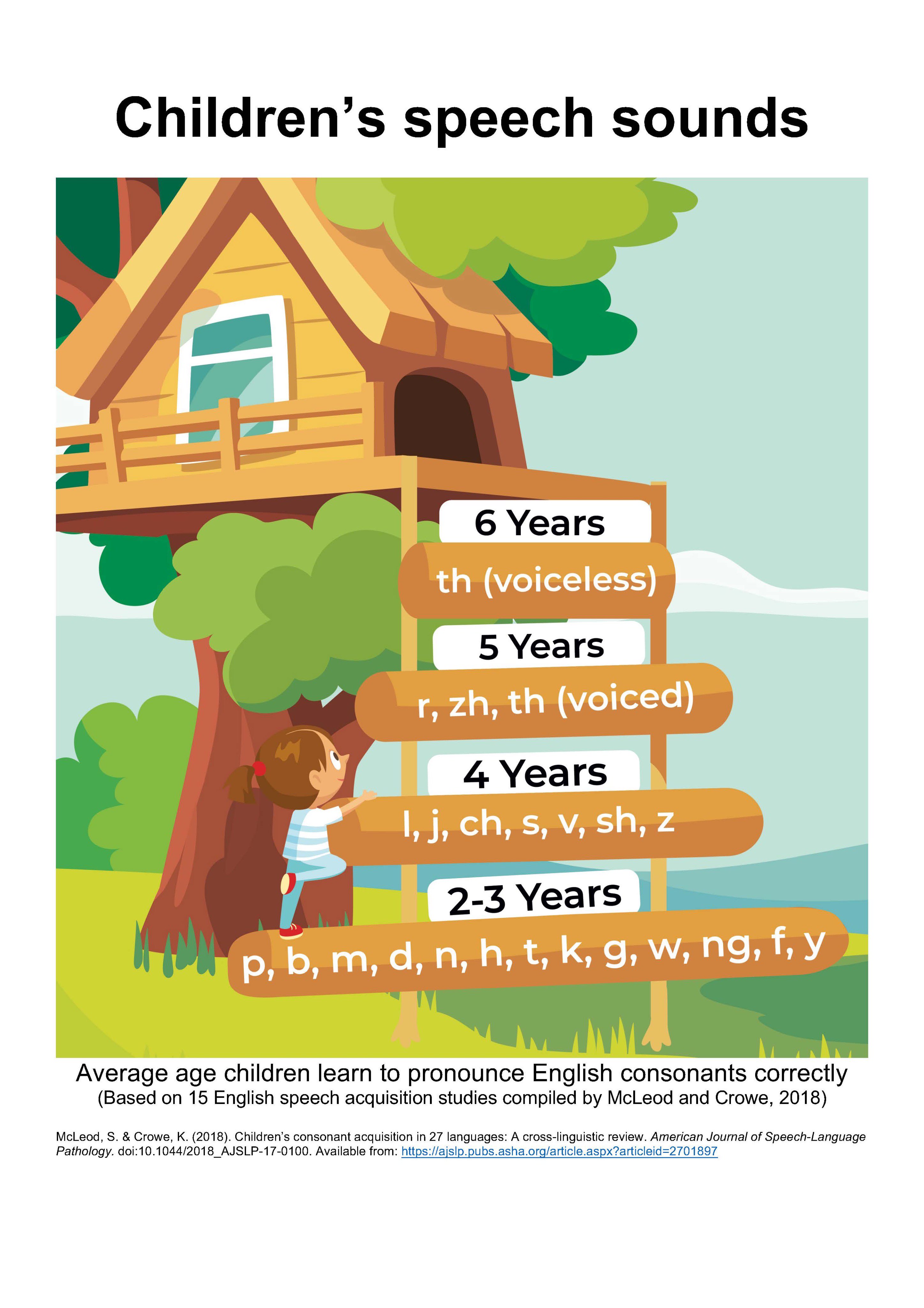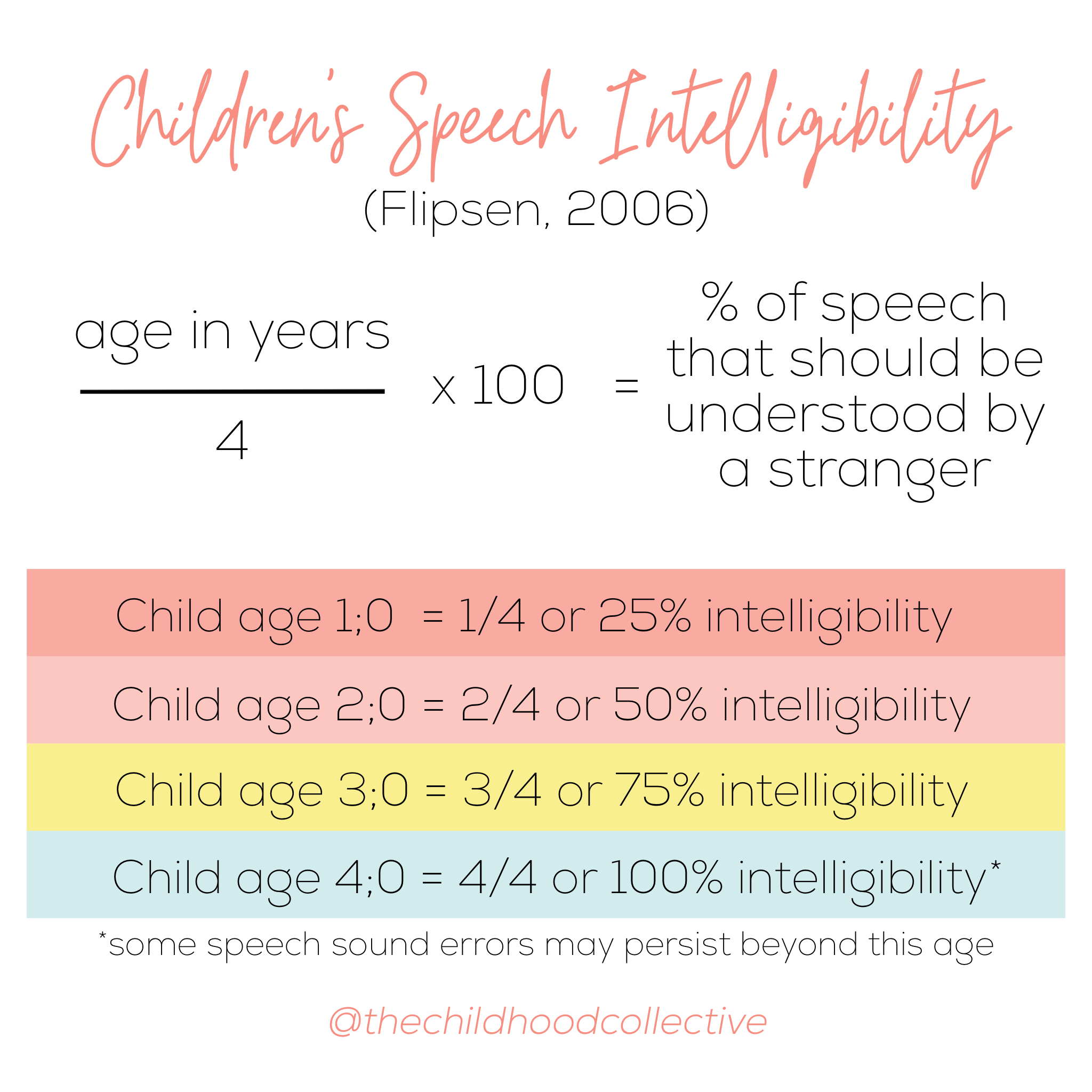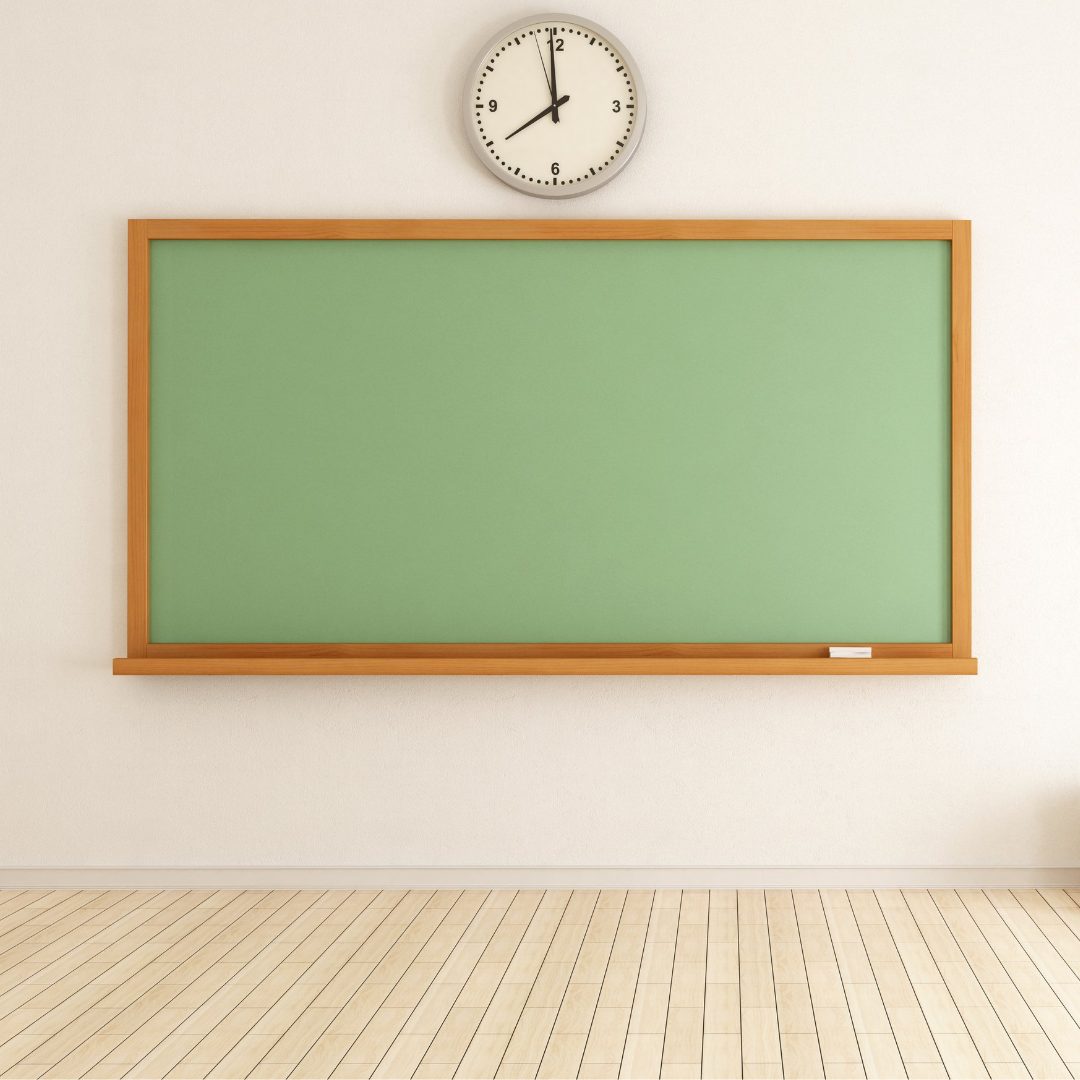How do we differentiate speech sound disorders from normal development? When children first learn to talk, they often say words in funny and unexpected ways. As parents, most of us have at least one story about our child mispronouncing a word and the embarrassing moments that followed! It is completely normal (and adorable) for children to mispronounce words… but when speech sound errors persist beyond a certain age, this can cause issues in reading, writing, and social interaction. For this reason, it’s important to identify articulation (speech) problems early.
In this post, I will break down a few of the most important questions parents have about speech disorders and give you some general guidelines to follow. If you are concerned about your child’s speech sounds, seeking an evaluation with a certified speech language pathologist (SLP) is always best.

1. What is the difference between speech and language?
To begin with, it’s important to identify the difference between speech and language. In this blog post, I am only talking about speech, which includes:
- The actual sounds we produce when we are communicating
- Voice
- Fluency
Language refers to how we put words together to communicate meaning. Areas of language include:
- Receptive (what a person comprehends)
- Expressive (what a person can express)
- Pragmatic (social language)
Typically, SLPs evaluate both speech and language when doing an evaluation. A child can struggle with speech only, language only, or both speech and language.
2. How Do I Know What is “Normal” for Speech Sound Development?
There are a few different ways that speech language pathologists measure this:
Intelligibility Rating
One option is to evaluate a child’s overall intelligibility or a percentage of how much of their message can be easily understood while the child is talking. This is typically assessed informally, but some assessments provide a numerical intelligibility rating. Research shows children should be completely intelligible (understood) by age 4. This chart breaks down the percentages for children ages 1-4:
It is important to note that some sound errors may persist beyond age 4, and this happens within typical development. A few common errors that many children still make at age 4 or 5:
- Errors on the “r” sound: the child may say “wabbit” for “rabbit.”
- Errors on the “th” sound: the child may say “fank you” for “thank you” or “dat one” for “that one.”
Individual Speech Sounds
Another way to determine whether a child needs a speech evaluation is to consider which sounds they have in their sound system. The graphic below shows the average age that children learn to produce these English consonants correctly.

3. Why is it important to have my child’s speech evaluated and treated at a young age?
For some children, speech sound errors can make them feel self-conscious when talking in front of their peers. Children might be teased by their friends. This can cause anxiety and avoidance of social situations requiring speaking.
When children have speech sound errors beyond age 4, they may struggle with early phonological skills because they will spell the word as they say it rather than correctly. In other cases, children know that they are saying the word incorrectly but are unsure how to fix it, so they spell words in odd ways to compensate. This can result in significant spelling and reading errors. In the next few weeks, we will post a blog on speech sound disorders and dyslexia to give you more detailed information on this important topic.
4. Where can I get a speech language evaluation?
The first step of successful speech therapy is having an evaluation. The SLP will ask you about your concerns, listen to your child talking, and probably give a few standardized tests to determine whether there is an actual disorder. They will evaluate your child’s voice, fluency, and oral movements before they develop a plan for how to help. If you think your child needs a speech evaluation, you have several options:
- Early intervention (age 0-3): This is typically low-cost or free, depending on your state. The therapist usually comes to your home, which is very convenient. Many early intervention SLPs will focus on a parent training model so parents can continue with the goals at home during the week.
- Local school district (age 3+): This option is free to families and offers excellent services for qualified children. For more information about requesting school testing, click here.
- Private practice (all ages): Private speech therapy is sometimes covered by insurance or can be private pay. Some private practice therapists like to do 2+ sessions per week, and parent involvement helps with the carryover of goals at home.
5. Will speech therapy be helpful for my child?
Usually, yes! Many children respond quickly to speech therapy, as they learn to say a new sound before building up to words, phrases, sentences, and conversation. Therapy can move quickly or slowly depending on how many sounds need to be treated (and several other factors such as attendance, motivation, and practice).
Speech therapy can take months or even years for children with more complex issues, such as childhood apraxia of speech or a severe phonological disorder. However, with the right therapist, using evidence-based intervention, your child should make progress, and it will become easier for you (and others!) to understand their message. By helping your child with speech sound production at a young age, you set them up for a lifetime of successful communication, reading, and writing.
Thanks so much for following along! If you aren’t already, please follow us on social media so you don’t miss a thing.
Have a beautiful week,
Katie








[…] these errors as readily. In this case, speech therapy can teach the correct pronunciation of sounds. I shared specific information about speech sound disorders here. Speech issues are important to address at a young age when possible. There is a strong link […]